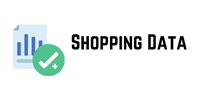Images play a key role in creating engaging online content, whether it’s a landing page visual or a detailed product photo in an e-commerce store. They help grab visitors’ attention , tell a story, and define your brand’s visual identity. However, with great power comes great responsibility: unoptimized images can have a negative impact on website performance. Large image files, especially, significantly slow down website loading speeds, especially on mobile devices with smaller screens and often slower internet connections. This can lead to user frustration and increased bounce rates, negatively impacting your website’s overall success. Since search engines like Google favor fast-loading websites, image optimization is absolutely essential for improving search rankings and achieving better singapore data SEO results . The good news is that optimizing images for WordPress doesn’t mean sacrificing quality.
How Image Optimization in WordPress Affects SEO
Optimized images are the cornerstone of successful SEO. When done correctly, they increase website speed, improve user experience, and influence search engine rankings . Large, unoptimized images, on the other hand, significantly slow down website loading times. Users are impatient and are more likely to abandon a page if it takes too long to load. This results in an increased bounce rate, which is a negative signal for SEO.
Faster loading means happier users (and search engines). Website visitors have little patience with slow-loading pages. An often-cited study shows that even a one-second delay can result in a 7% reduction in conversions.
Optimized images reduce load times and help keep users engaged. They can also result in longe kerri daley regional director sales and marketing r session durations, which search engines can use to evaluate the quality of your site. Page load speed is one of Google’s official ranking factors. Slow sites rank lower in search. Google favors sites that provide a fast and smooth experience for users.
Optimized images improve basic web metrics
Core Web Vitals, the key metrics for evaluating the user experience of a website, place a strong emphasis on user experience, and image optimization plays a crucial role in this regard. The Largest Contentful Paint (LCP) metric measures the time it takes to load the largest visible element in the user’s field of view – often an image, splash screen, or video. If your images are not properly optimized, such as having a large file size or not in the optimal format, the loading time of this largest element will increase and your LCP score will suffer. A poor LCP score can then negatively impact your website’s search rankings, as Google favors sites with fast loading times and a good user experience. That’s why optimizing images for LCP is critical for SEO success .
Mobile-friendly indexing favors fast, responsive pages
Since Google indexes websites primarilyMake Google happy by optimizing images in WordPress from a mobile perspective, loading speed on mobile devices is especially important. Optimized images will ensure that your website loads quickly on mobile phones and tablets. Responsive, mobile-friendly images that use modern formats like WebP (supported in WordPress since version 5.8) or AVIF (supported in WordPress since version 6.5) ensure fast loading on all devices.
